Have you ever seen a tent suspended between trees? I remember seeing this concept a few years ago on social media and was super interested in trying it out. Well, we recently had the opportunity to test out the Tentsile Flite 2-person Tree Tent and have put together a little review based on our limited experience using it.
I will preface this review by saying this is purely a product review based on finding a suitable location, putting the tent up, improvising a sleeping situation, and pulling the tent down. We did not do a full camping test so our feedback is somewhat limited in this regard.
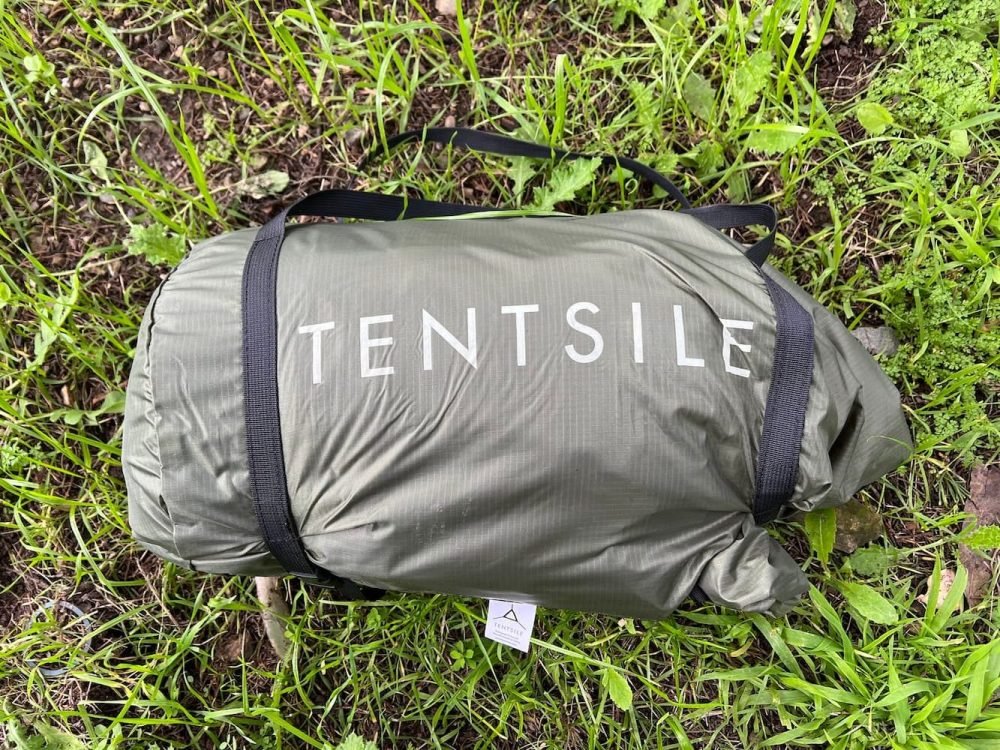
Living in San Francisco we are surrounded by parks and rugged coastline with ample tree cover. At first I thought this would make it pretty easy to do a test but as you will read below, it was a little more difficult than I had hoped. I have broken this review into sections to make it more digestible. Here goes...
The first impression was that the tent was quite heavy in comparison to other 2-person tents. This is due predominantly to the ratchet and D rings. For a 2-person tent, it felt significantly heavier and bulkier than normal. When I compared it to similarly priced 2-person ground tents it was at least double the weight, if not more, coming in at 4.7kg (10.4lb) .
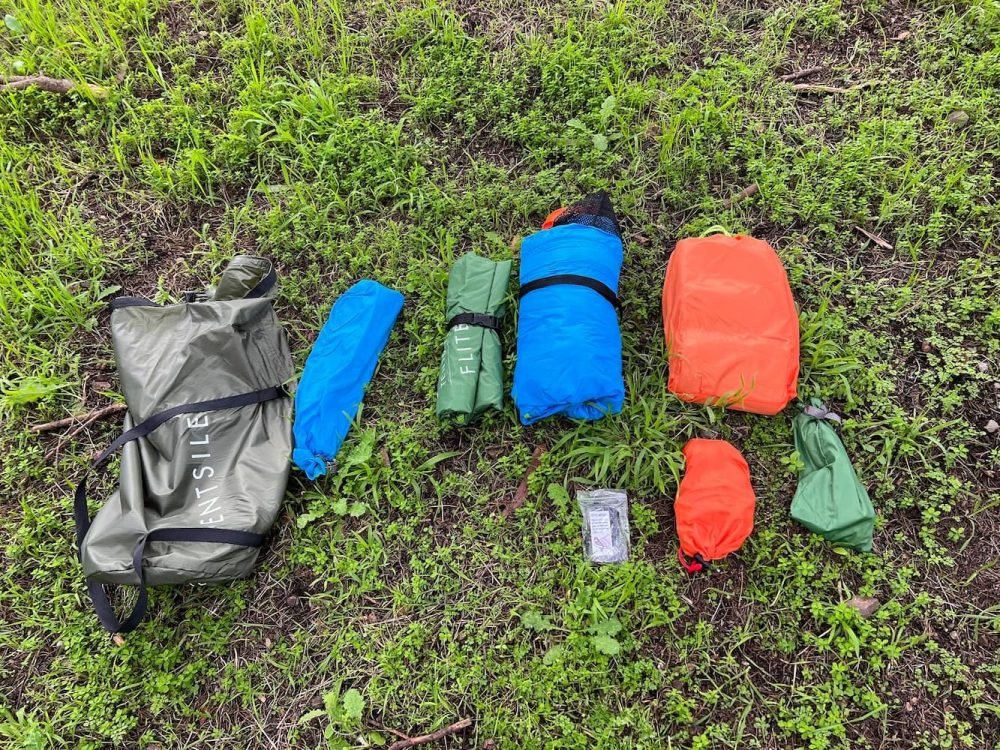
It took quite some time to find 3 trees that would work (due to the required distance apart, the arrangement of the trees, and the girth of each trunk). I realize there is a ground kit but this was not included so I couldn't review it and this also would be extra weight (1.5kg) and cost ($85).
This need for a rather specific tree arrangement will eliminate some sites completely if there are no suitable trees (or no trees at all). Of course, it's important to remember that a standard ground tent has its own issues if the ground is uneven, rocky, or too wet. As you'll read in my conclusion, there is actually a good crossover between the issues for a ground tent vs a tree tent.
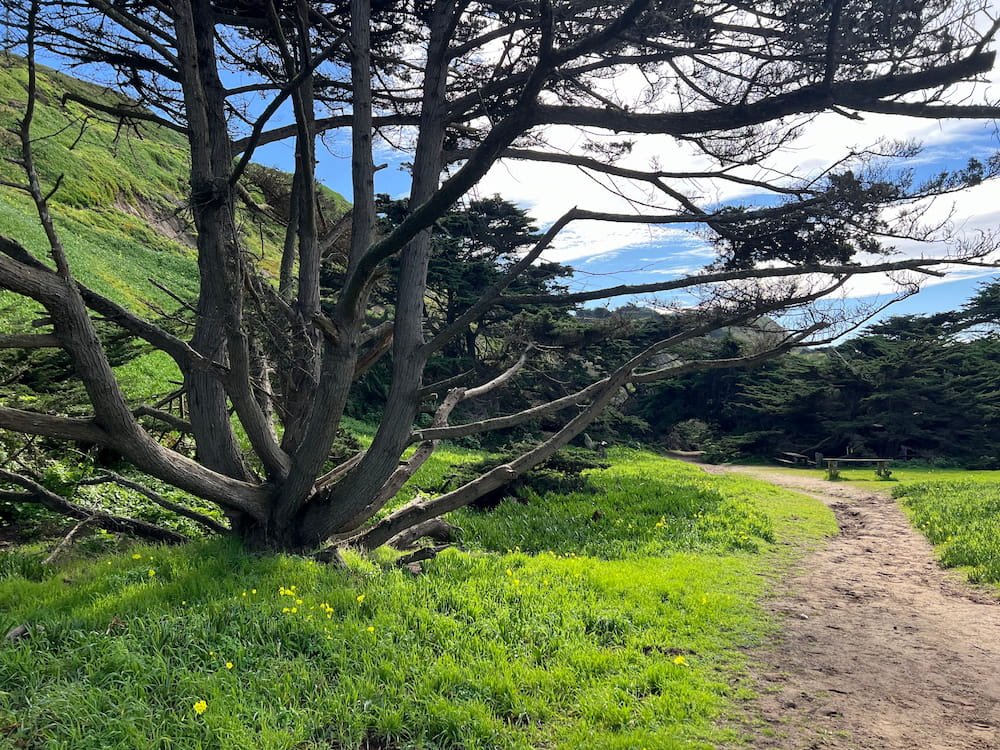
Once we found 3 suitable trees, it was far more time-consuming and complicated than I expected to put the tent up. If I was tired due to hiking, or it was the end of the day I would not want to take on this battle. Not to mention if it was raining (which it did while we were packing up).
That being said - I'm sure it would get easier and quicker with more practice but there are inherent issues that come with this design.
Aligning the tent between the 3 trees was challenging, especially trying to get each strap the same height on each tree.
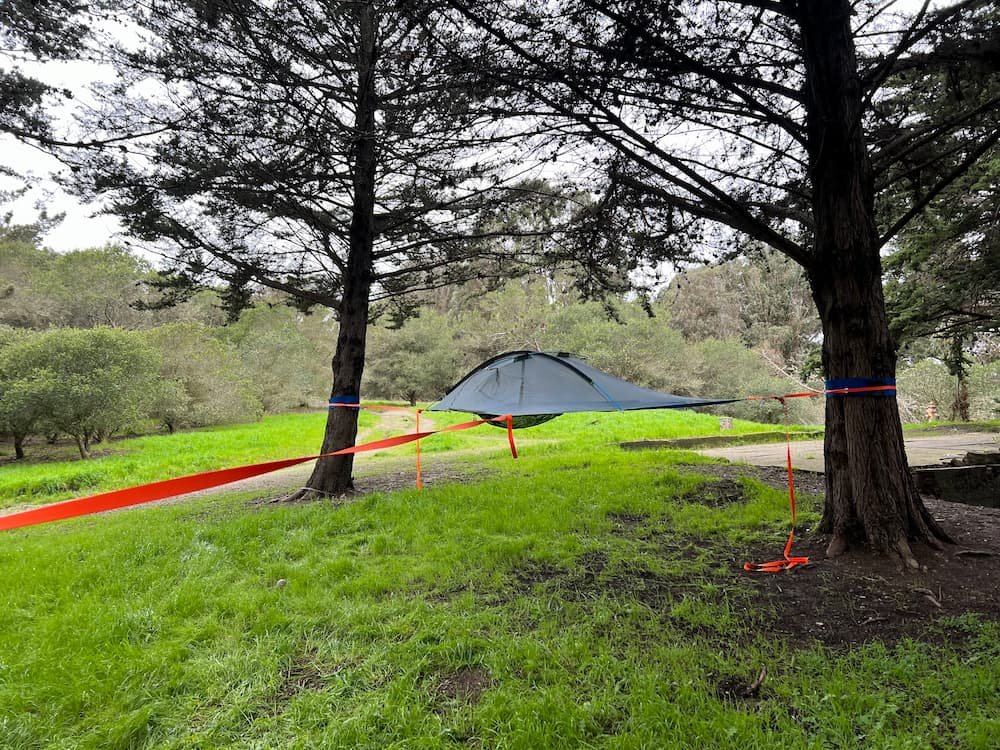
Tensioning the straps took some effort. If you have never used a ratchet system before this is going to be quite frustrating for your first few attempts. It took me around 6 or 7 attempts before I managed to get an even tension on all 3 straps so that there wasn't a significant sag in the floor of the tent.
Once the tent was erect and taut it was extremely comfortable to lie down on as a single person. As soon as we both jumped in we sorta sank together into the middle and there was not a lot of room.
With a pack and other items it would have felt even tighter and the extremely low roof felt a little claustrophobic.
Due to the hammock-style of the tent you would probably not need to pack sleeping pads if you're in a warm climate (saving around 800g based on 2 pads) which is a plus. However, if you were taking this to a cold climate you would most definitely need those sleeping pads for insulation as the floor provides no insulation at all.
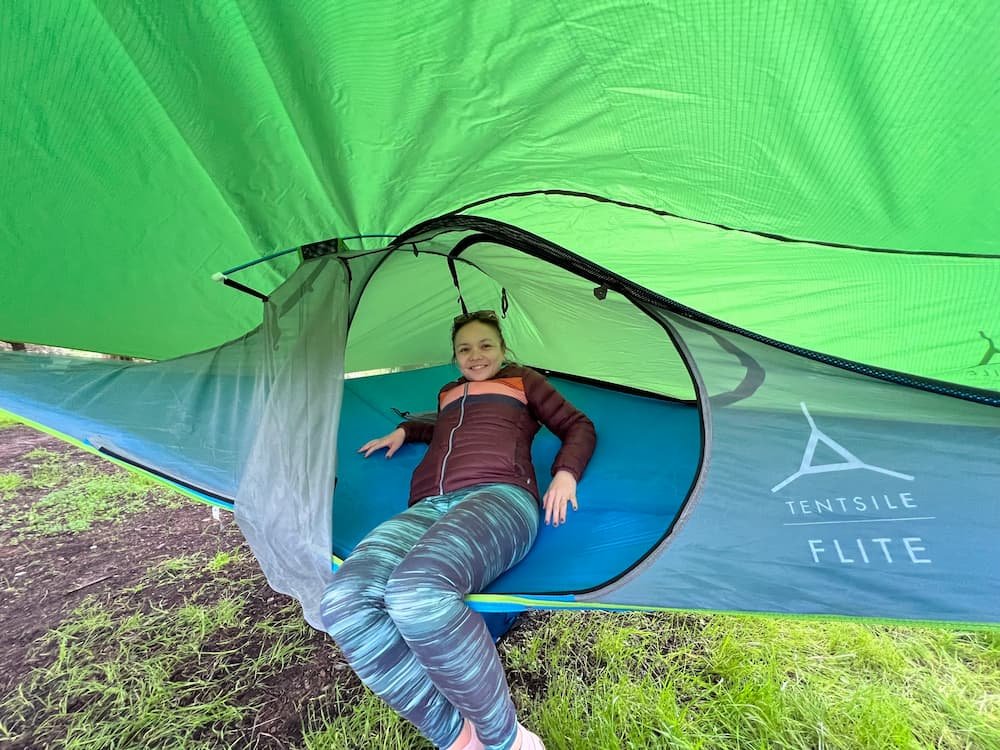
No matter how taut you end up getting the straps, this tent is much more affected by wind than a standard ground tent. It's significantly harder to erect in windy conditions and sways even in light winds.
Where it comes into its own is the benefit of being elevated during heavy rains/flooding which is a huge plus. If you've ever set up your tent near a creek or low-lying land and then had rain overnight you know how sucky getting flooded camping is.
Being elevated also means that air can flow beneath the floor of the tent. This could be a benefit in warm conditions but would not be good in colder temperatures, especially if you don't have a sleeping pad.
Given the limited interior space, there is a small mesh bag that can be hung below the tent. This is actually quite a novel idea as it gives a lot more space inside the tent while keeping the bags dry though there are a couple of issues.
Firstly, you would not want to keep any food in your pack as this could attract critters. Secondly, you also wouldn't want to keep anything valuable in your packs as it's much more accessible to theft.
As you can see from the picture below there is a massive benefit to this design which basically gives you a place to sit and chill out that's out of the sun and rain. This was a huge benefit when we finished putting the tent up and wanted to get out of the rain.
Due to the size of the tarp, it's also pretty easy to get into or out of the tent from underneath without stepping outside.
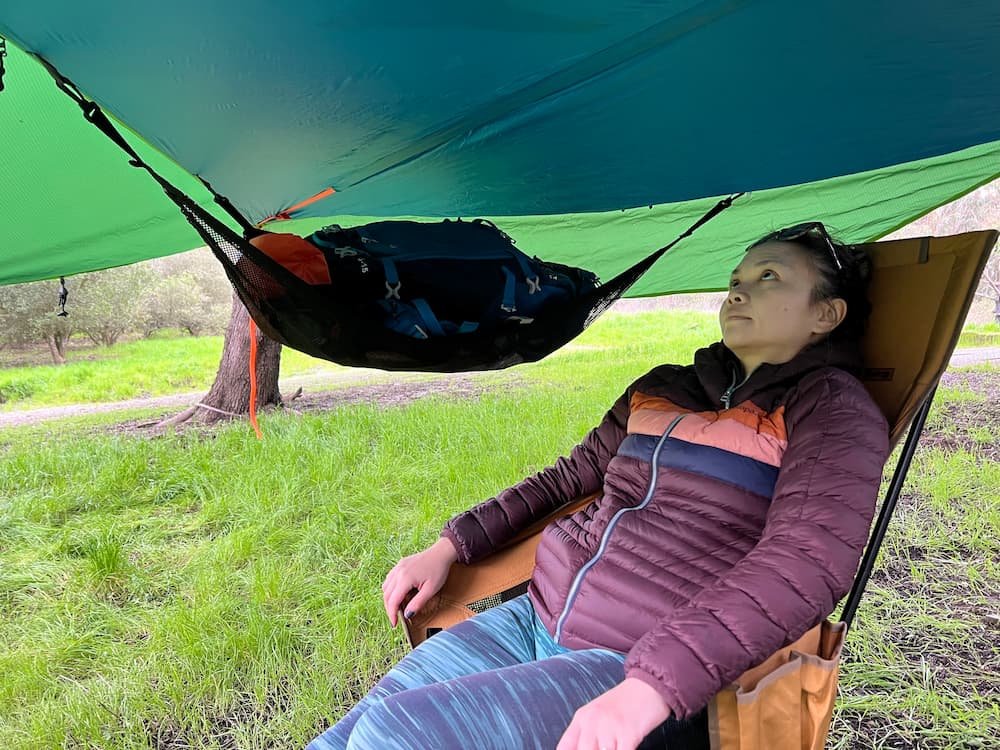
Packing up was very straightforward though also took a little longer due to the need for wrapping straps and tree wraps. This was definitely not a factor though. It was really as simple as releasing the ratchet, untying a knot, and disassembling.
I really wanted to love this tent. It looks cool and has some interesting applications. Unfortunately I don't think this would be my go-to tent for camping unless I knew that there were plenty of trees and it wasn't a long hike in.
However, I do think there is a market for this type of tree tent, especially the fun-factor for kids. This would make the perfect tent to take the kids on a camping trip. Imagine the fun they would have climbing in and out.
I also think this allows for some extreme camping that would simply not be possible with a standard ground tent. I've seen these pitched over rivers and even across canyons. It certainly makes for an epic social media post (which ironically is what first drew me to the design).
After providing our feedback from the review, Tentsile came back to us with the following tips:
"There are instructions available on Tentsile’s Youtube channel that explain how to adjust the underfloor strap so that you get two individual berths, and don’t roll into the middle."
"Although finding three trees in the right configuration can be difficult for a first-time setup, Tentsile has a guide on their Youtube channel that gives some tips and hacks for finding the right angles. They have also developed an App which can be used to help with this."
